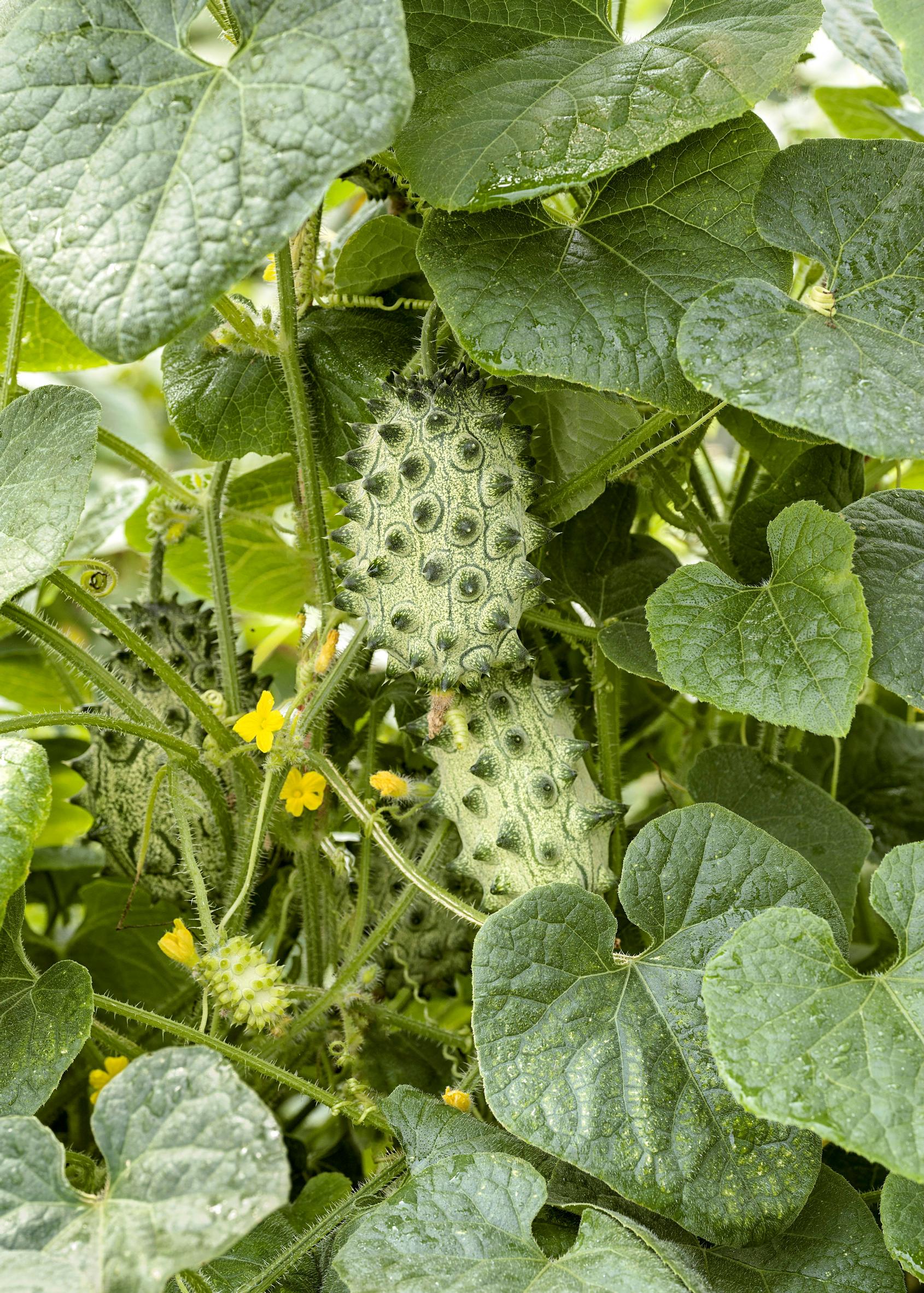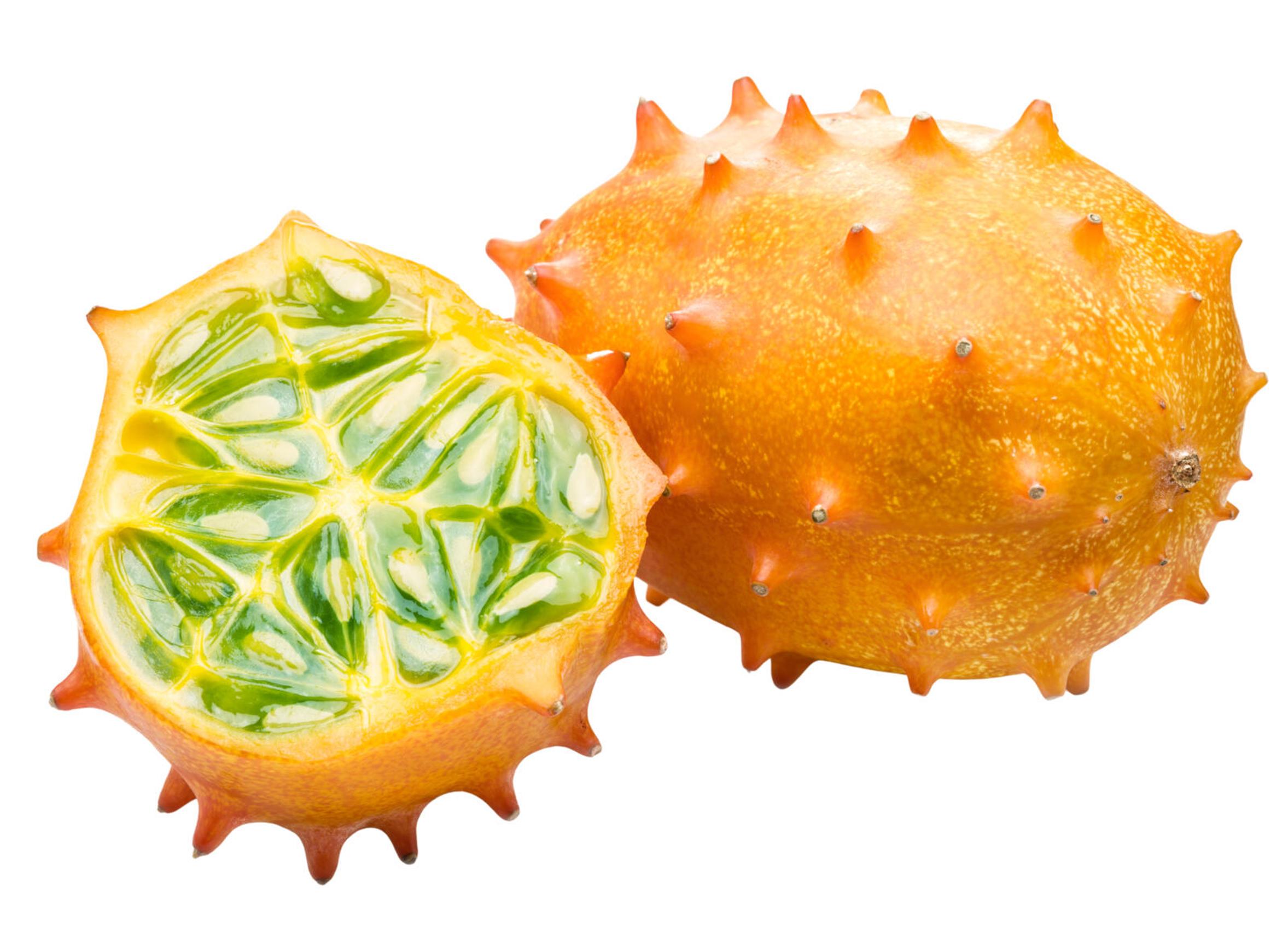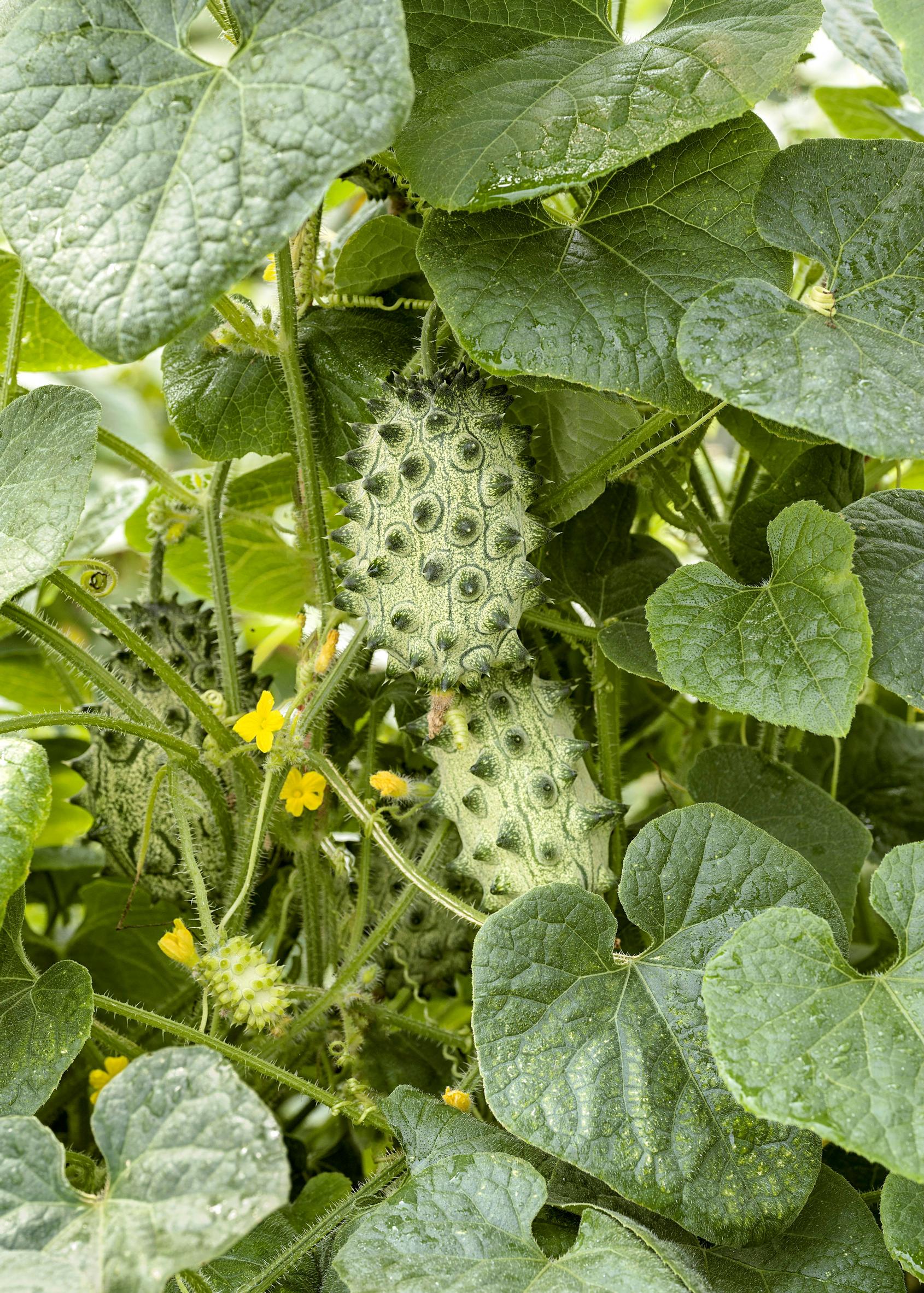
Grow yourself some horned melon! This whimsical and versatile fruit can be eaten ripe or unripe
Horned melon thrives in a warm spot. As the fruit ripens, its jelly-like interior sweetens and develops a banana-like flavor. Growing horned melon, also called “kiwano,” is similar to growing cucumbers and melons.
Spiny horned melons can be eaten at any stage of ripeness. The unripe fruit has a mild, slightly tart taste. As it ripens, its jelly-like interior sweetens and takes on a hint of banana. Because horned melon, also called “kiwano,” loves warm conditions, it is grown much like cucumbers and melons. Grow horned melon in a greenhouse or outdoors in a warm, sheltered spot.
Growing horned melon—how to succeed
Starting horned melon indoors
Sow the seeds directly in pots in March–April and keep them on a warm surface. The ideal germination temperature is 22–25°C, and germination takes 1–2 weeks.
Gradually acclimate horned melons to changing conditions. If they must wait for warmer weather before planting, move the seedlings into larger containers as needed. Early in the season, both air and soil temperatures should stay above 10–15°C. A row cover protects against chills and encourages growth.
Growing and caring for horned melon
Plant the seedlings in light, pre-fertilized soil. Throughout the growing season, provide extra nutrients by watering or by burying fertilizer near the root ball. Let the soil dry slightly between waterings, so it stays just a bit moist.
Train the plant upward and prune side shoots. Unpruned horned melons can easily sprawl. Outdoors, you can allow the vines to spread along the ground.
Use a small brush to transfer pollen from male flowers to female flowers if there aren't a lot of insects buzzing around.
Horned melon requires plenty of light, warmth, water, and nutrients.
Ripen until sweet
- You can pick unripe horned melon and let it ripen indoors. Post-harvest ripening works best if the skin has toughened before picking.
- Green fruits with soft skins shrivel easily and will not turn yellow-orange, so it’s best to use them fresh.
- Keep fruit you plan on ripening further at room temperature. Because of their waxy rind, they can stay fresh for weeks, sometimes months. They also make striking decorative pieces, and the hollowed-out shells can be used for serving dishes.

Did you know?
- Horned melon (Cucumis metuliferus) of the gourd family is closely related to melons and cucumbers and is also known as African horned cucumber, jelly melon and spiked melon.
- In stores, horned melon is often sold under the name kiwano, which is a registered trademark for New Zealand–grown horned melons.
- Horned melon seeds are usually sold without a variety name. Seedlings are rarely available.

Horned melon growing season
- Sow seeds indoors in March–April
- Transplant into a greenhouse in May–June
- Plant outdoors in June or once the risk of frost has passed
- Harvest and ripen indoors from August to December


